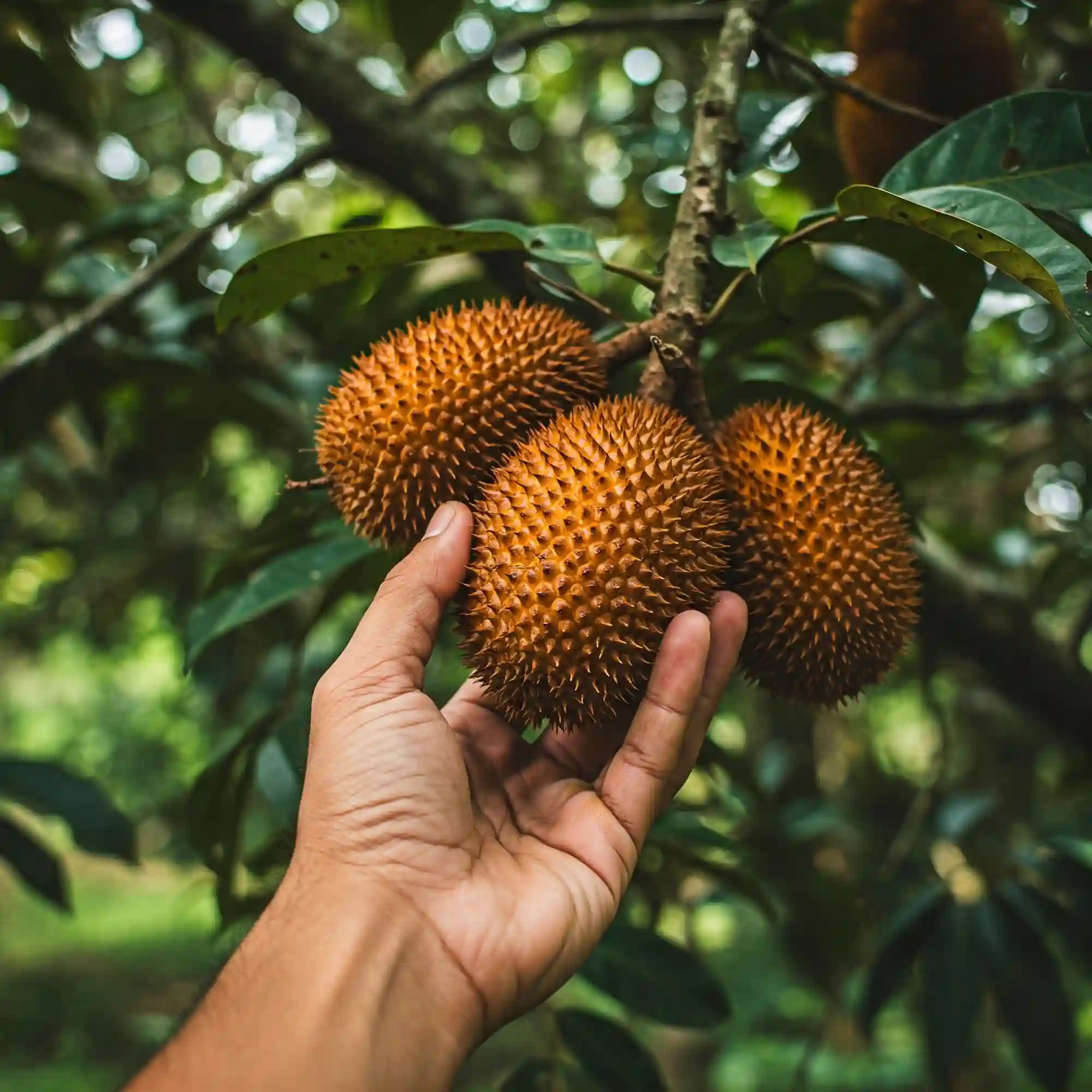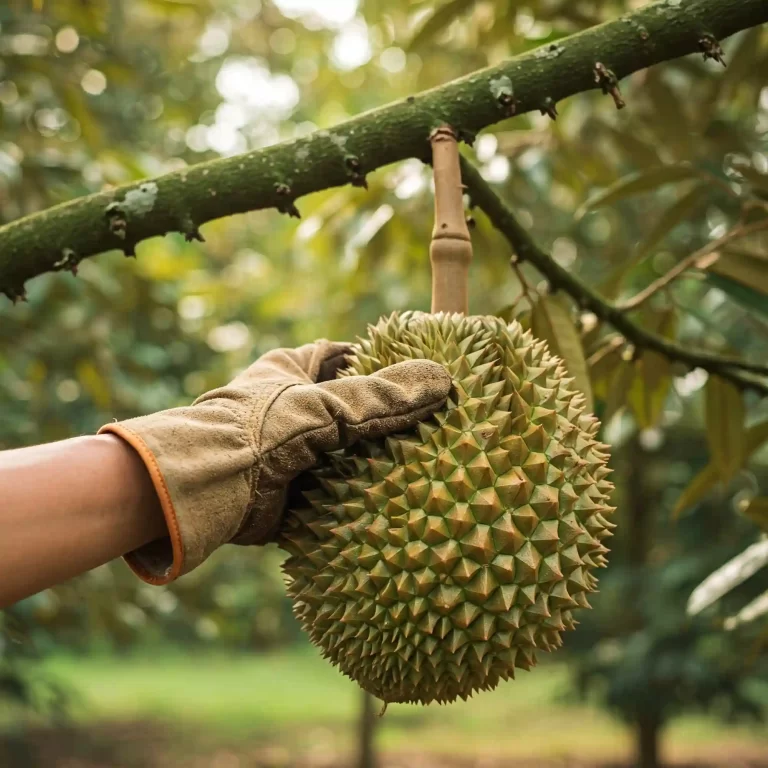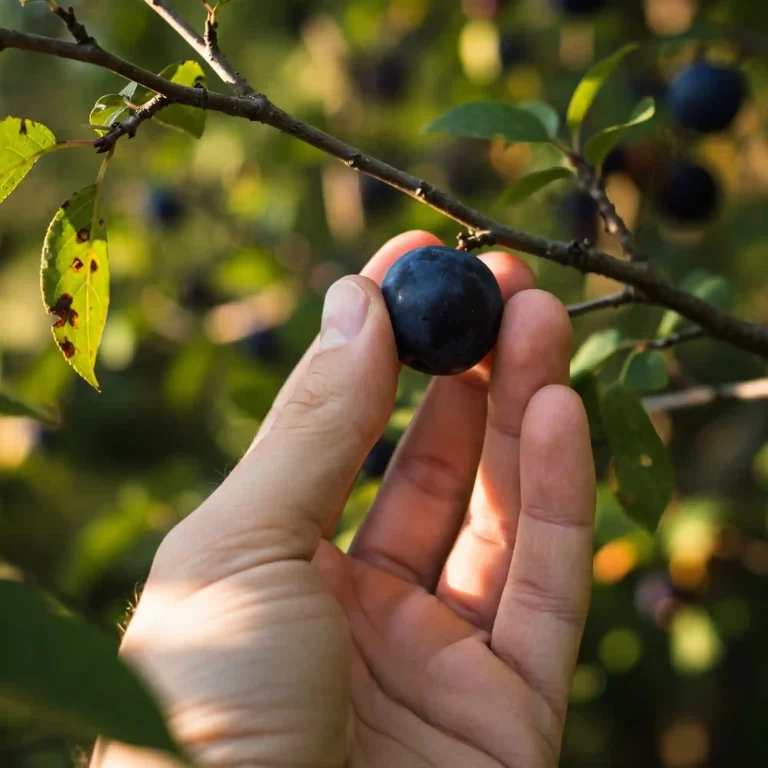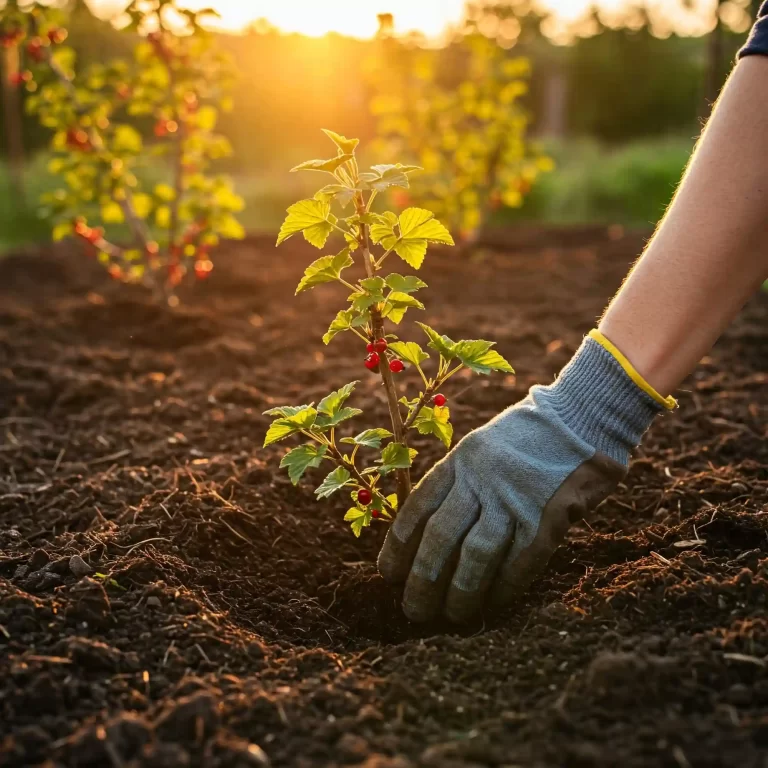Have you ever looked at the exotic Cempedak fruit in the market, wondering if you could ever grow one yourself? The thought of cultivating this unique tropical treasure might seem daunting. You’re likely facing the challenge of not knowing where to start, what soil to use, or how to properly care for the tree. Imagine the satisfaction of harvesting your own sweet, fragrant Cempedak fruits right in your backyard. I’m here to tell you that it’s absolutely achievable, and I’ll guide you through every step of the process.
Understanding Cempedak Trees
Cempedak trees, scientifically known as Artocarpus integer, are captivating tropical fruit trees that belong to the same family as the jackfruit. They are renowned for their unique, spiky fruits that offer a delightful blend of sweet and savory flavors. Understanding the characteristics of these trees is crucial for successful cultivation.
Growth Habit and Size
Cempedak trees are typically medium to large in size, reaching heights of up to 30 meters (98 feet) in optimal conditions. They exhibit a spreading, rounded canopy that provides ample shade. The trees are characterized by their strong, sturdy trunks and large, glossy, dark green leaves. The leaves are deeply lobed, resembling the shape of a hand with spread fingers.
Climate and Soil Preferences
As tropical natives, Cempedak trees thrive in warm, humid climates with ample rainfall. They prefer temperatures between 25-30°C (77-86°F) and high humidity levels. While they can tolerate some shade, they generally require at least 6-8 hours of direct sunlight per day for optimal growth and fruit production.
Cempedak trees are adaptable to a range of soil types but prefer well-drained, fertile soils rich in organic matter. The ideal soil pH range is slightly acidic to neutral (6.0-7.0). Poorly drained soils can lead to root rot and other problems, so ensuring good drainage is essential.
Pollination and Fruit Development
Cempedak trees are monoecious, meaning they have both male and female flowers on the same tree. However, they require cross-pollination for fruit set. Wind and insects, particularly bees and wasps, play a crucial role in transferring pollen between male and female flowers. Successful pollination is essential for the development of healthy, viable fruits.
The Cempedak fruit develops from the fertilized female flowers and matures over several months. The fruits are large, spherical to oblong, and covered in numerous spiky protuberances. As the fruit matures, it changes color from green to yellow or brownish-yellow.
Key Takeaways
- Cempedak trees are medium to large tropical trees with a spreading canopy.
- They thrive in warm, humid climates with ample sunlight and well-drained, fertile soil.
- Successful pollination is crucial for fruit development.
- Understanding the growth habits, climate preferences, and pollination requirements of Cempedak trees is essential for successful cultivation.
By understanding these key aspects of Cempedak trees, you can provide the optimal growing conditions for these fascinating plants and increase your chances of a successful harvest.
Selecting the Right Location for Your Cempedak Tree
Choosing the right location for your Cempedak tree is crucial for its healthy growth and fruit production. Consider the following factors:
Space Considerations:
Cempedak trees are vigorous growers and can reach significant heights and widths. Therefore, it’s essential to select a planting site with ample space. A minimum of 10 to 15 feet (3 to 4.5 meters) of space should be provided around the tree to allow for its full development. Remember that the tree’s roots will also spread out, so avoid planting near underground utilities or structures.
Sunlight and Shade Requirements:
While Cempedak trees can tolerate some shade, they thrive in locations with ample sunlight. Ideally, they should receive at least 6 to 8 hours of direct sunlight per day. However, avoid planting them in areas exposed to intense midday sun, as this can stress the trees and reduce fruit production. Consider planting them near taller trees or structures that can provide some afternoon shade.
Wind Protection:
Strong winds can damage Cempedak trees, breaking branches and reducing fruit yield. Therefore, it’s crucial to select a planting site that is sheltered from strong winds. Plant them near windbreaks such as fences, hedges, or other trees that can provide protection.
Additional Considerations:
- Soil Drainage: Avoid planting Cempedak trees in low-lying areas where water may accumulate. Poor drainage can lead to root rot and other problems.
- Proximity to Structures: Ensure that the planting site is not too close to buildings or structures that could be damaged by the tree’s roots as it matures.
- Aesthetics: Consider the overall aesthetics of the planting site. Cempedak trees are visually appealing and can add beauty to your landscape.
By carefully selecting the right location for your Cempedak tree, you can provide it with the optimal growing conditions and increase your chances of a successful and rewarding harvest.
Preparing for Planting
Before planting your Cempedak tree, it’s essential to prepare the planting site and gather the necessary materials. Here are some key steps to consider:
Soil Preparation
Cempedak trees thrive in well-drained, fertile soil. If your soil is heavy clay or sandy, amending it with organic matter will improve its structure and water retention. Here are some steps you can take:
- Tilling: Till the soil to a depth of 12-18 inches (30-45 cm) to loosen it and remove any weeds or rocks.
- Adding Organic Matter: Incorporate organic matter such as compost, well-rotted manure, or leaf mold into the soil. This will improve soil structure, aeration, and nutrient content. Aim for a depth of 6-8 inches (15-20 cm) of organic matter.
- Improving Drainage: If your soil is prone to waterlogging, consider creating raised beds or incorporating drainage materials like gravel or sand to improve drainage.
Choosing Planting Stock
When selecting a Cempedak tree for planting, consider the following options:
- Seedlings: Seedlings are the most affordable option but can take longer to bear fruit (3-5 years).
- Grafting Trees: Grafted trees are typically more expensive but can start producing fruit sooner (2-3 years) and are often grafted onto disease-resistant rootstocks.
- Air-Layered Plants: Air-layering is a propagation method that produces trees that start fruiting within 1-2 years.
Ensure that the planting stock you choose is healthy and free from pests and diseases. It’s best to purchase from reputable nurseries or local growers.
Planting Time and Depth
The ideal time to plant Cempedak trees is during the start of the rainy season or during the cooler months when the weather is milder. This allows the tree to establish itself before the onset of the dry season.
When planting, dig a hole slightly larger than the root ball of the tree. Place the tree in the hole, ensuring that the root collar (the point where the roots meet the stem) is level with the surrounding soil. Backfill the hole with the prepared soil, gently firming it around the roots.
By carefully preparing for planting, you can set the stage for the successful growth and development of your Cempedak tree.
Planting Your Cempedak Tree
Now that you’ve selected a suitable location and prepared the soil, it’s time to plant your Cempedak tree. Follow these steps carefully to ensure a healthy start:
Step-by-Step Planting Instructions:
- Digging the Hole: Dig a planting hole that is slightly larger than the root ball of the tree. The depth of the hole should be such that the root collar (the point where the roots meet the stem) is level with the surrounding soil after planting.
- Placing the Tree: Gently remove the tree from its container or burlap wrapping, taking care not to damage the roots. Place the tree in the center of the hole, ensuring that it is upright.
- Backfilling with Soil: Backfill the hole with the prepared soil, gently firming it around the roots to remove any air pockets. Avoid over-compacting the soil, as this can damage the roots.
- Watering: Water the newly planted tree thoroughly to settle the soil and ensure good root contact.
- Mulching: Apply a layer of organic mulch, such as wood chips or shredded bark, around the base of the tree. Mulch helps to retain moisture, suppress weeds, and regulate soil temperature. Keep the mulch away from the trunk of the tree to prevent rot.
Staking and Support:
Young Cempedak trees may benefit from staking, especially in windy locations. Drive a sturdy stake into the ground near the tree and tie the trunk loosely to the stake using soft materials like cloth or rope. This will help to prevent the tree from being damaged by strong winds.
Post-Planting Care:
Continue to water the newly planted tree regularly, especially during dry periods. Avoid overwatering, as this can lead to root rot. Keep an eye on the tree for any signs of stress or pests and diseases.
By following these steps and providing proper post-planting care, you can ensure that your Cempedak tree gets off to a healthy start.
Caring for Your Cempedak Tree
Providing consistent care to your Cempedak tree is essential for its healthy growth and optimal fruit production. Here are some key aspects of Cempedak tree care:
Watering Needs
Cempedak trees require regular watering, especially during dry periods. Young trees are more susceptible to drought stress and require frequent watering to establish a strong root system. However, avoid overwatering, as this can lead to root rot. Water deeply and infrequently, allowing the soil to dry out slightly between waterings. Mulching around the base of the tree can help to retain soil moisture and reduce the frequency of watering.
Fertilization
Fertilizing your Cempedak tree regularly will provide it with the necessary nutrients for healthy growth and fruit production. Use a balanced fertilizer formulated for fruit trees, such as a 10-10-10 NPK fertilizer. Apply the fertilizer around the drip line of the tree (the outer edge of the canopy) in early spring before new growth begins. Avoid applying fertilizer directly to the trunk of the tree, as this can damage the bark.
Pruning Techniques
Pruning is an essential part of Cempedak tree care. It helps to shape the tree, remove dead or diseased branches, and control its size. Here are some pruning tips:
- Timing: The best time to prune Cempedak trees is during the dormant season, typically in late winter or early spring before new growth begins.
- Shaping: Prune young trees to establish a strong central leader and an open canopy structure. Remove any crossing branches or branches that are growing inward.
- Removing Dead or Diseased Wood: Regularly inspect the tree for dead, diseased, or damaged branches and remove them promptly.
- Controlling Growth: If the tree is growing too vigorously, you can prune to control its size and shape. However, avoid excessive pruning, as this can reduce fruit production.
By following these care practices, you can ensure that your Cempedak tree remains healthy, vigorous, and productive.
Pest and Disease Management
While Cempedak trees are generally hardy, they can be susceptible to certain pests and diseases. Regular monitoring and timely intervention are crucial to maintain the health and vitality of your tree.
Common Pests:
- Fruit Flies: Fruit flies are attracted to the ripening Cempedak fruits and can cause significant damage. They lay their eggs in the fruit, leading to fruit rot and spoilage.
- Mealybugs: These small, sap-sucking insects can infest Cempedak trees, weakening them and reducing fruit production. They often cluster in leaf axils and on the undersides of leaves.
- Scale Insects: Scale insects attach themselves to the branches and leaves of the tree, sucking sap and hindering growth. They can also produce honeydew, which attracts sooty mold.
Disease Prevention and Control:
- Fungal Diseases: Cempedak trees can be susceptible to fungal diseases, especially in humid conditions. Root rot is a common problem, particularly in poorly drained soils.
- Maintaining Good Hygiene: Proper sanitation practices can help prevent the spread of pests and diseases. Remove and destroy any fallen leaves, fruits, or other plant debris around the base of the tree.
Control Methods:
- Organic Control:
- Neem Oil: Neem oil is a natural insecticide that can be effective against various pests, including mealybugs and scale insects.
- Insecticidal Soap: Insecticidal soap can help control soft-bodied insects like mealybugs.
- Beneficial Insects: Encouraging the presence of beneficial insects, such as ladybugs and lacewings, can help to control pest populations.
- Chemical Control: In severe cases, chemical insecticides may be necessary. However, it’s important to choose appropriate insecticides and follow label instructions carefully to minimize environmental impact.
Monitoring and Prevention:
Regularly inspect your Cempedak tree for signs of pests and diseases. Early detection and intervention can help prevent serious problems. Monitor the tree for any unusual symptoms, such as leaf discoloration, wilting, or the presence of pests.
By implementing effective pest and disease management strategies, you can protect your Cempedak tree and ensure a healthy and productive harvest.
Harvesting and Enjoying Your Cempedak Fruits
The moment you’ve been waiting for has arrived – harvesting your homegrown Cempedak fruits! Here’s how to ensure you get the most out of your harvest:
Signs of Fruit Ripeness
Recognizing when Cempedak fruits are ripe is crucial for optimal flavor and texture. Here are some key indicators:
- Color: As the fruits ripen, they change color from green to yellow or brownish-yellow.
- Aroma: Ripe Cempedak fruits emit a distinctive, sweet aroma.
- Texture: The skin of ripe fruits may appear slightly soft to the touch.
- Fruit Drop: Some fruits may naturally drop from the tree when they are fully ripe.
Harvesting Techniques
- Use Appropriate Tools: Use a sturdy pole or ladder to reach the fruits, especially those located higher up in the tree.
- Handle with Care: Cempedak fruits are delicate and can be easily bruised. Handle them carefully to avoid damage.
- Harvesting Frequency: Harvest fruits as they ripen to prevent over-ripening and fruit drop.
Storing and Enjoying Cempedak Fruits
- Storage: Ripe Cempedak fruits are best enjoyed fresh. If you cannot consume them immediately, you can store them in a cool, dry place for a few days.
- Preparing and Eating: Cempedak fruits can be eaten fresh, or they can be used in various culinary preparations. The flesh can be eaten raw, or it can be cooked in various ways, such as grilling, frying, or baking.
Culinary Uses:
Cempedak fruits are versatile and can be used in a variety of dishes. Here are some ideas:
- Fresh Fruit: Enjoy the sweet and savory flavor of ripe Cempedak fruit on its own.
- Cempedak Chips: Slice the fruit into chips and bake or fry them for a delicious snack.
- Cempedak Curry: Cempedak fruit can be added to curries for a unique and flavorful twist.
- Cempedak Desserts: The fruit can be used to make cakes, pies, and other desserts.
Troubleshooting Common Cempedak Tree Problems
While Cempedak trees are generally resilient, they can encounter certain challenges. By recognizing and addressing these problems promptly, you can ensure the health and vitality of your tree.
Common Problems:
- Poor Fruit Set: If your Cempedak tree fails to produce fruit or produces a low yield, several factors could be at play. Inadequate pollination, nutrient deficiencies, or environmental stress can all contribute to poor fruit set.
- Leaf Yellowing: Leaf yellowing can be a symptom of various issues, including nutrient deficiencies, overwatering, or root problems. Observe the pattern of yellowing to determine the underlying cause.
- Stunted Growth: Stunted growth can be caused by nutrient deficiencies, improper watering, pest infestations, or diseases.
- Pest and Disease Infestations: As discussed earlier, pests like mealybugs, scale insects, and fruit flies, as well as diseases such as root rot and fungal infections, can negatively impact the health of your Cempedak tree.
Diagnosing and Addressing Issues:
- Careful Observation: Regularly inspect your Cempedak tree for any signs of stress, such as leaf discoloration, wilting, or unusual growth patterns. Monitor for the presence of pests and diseases.
- Soil Testing: If you suspect nutrient deficiencies, consider having your soil tested to determine its nutrient content and pH level.
- Consulting Experts: If you are unable to diagnose or address a particular problem, consult with a local agricultural extension agent, a certified arborist, or an experienced Cempedak grower for assistance.
Preventive Measures:
- Proper Care: Providing proper care, including adequate watering, fertilization, and pruning, can help to prevent many common problems.
- Pest and Disease Control: Implementing regular pest and disease management practices, as discussed earlier, can help to minimize the risk of infestations.
- Monitoring and Early Intervention: Regular monitoring of your Cempedak tree and early intervention to address any problems will help to maintain its health and vigor.
By understanding and addressing common Cempedak tree problems, you can ensure that your tree thrives and provides you with a bountiful harvest of delicious fruits.
FAQs:
Growing Cempedak fruits can raise many questions. Here are some frequently asked questions and their answers:
Q: How long does it take for a Cempedak tree to start producing fruit?
A: The time it takes for a Cempedak tree to start bearing fruit can vary depending on several factors, including the variety of the tree, growing conditions, and propagation method. On average, it can take anywhere from 3 to 5 years for seedling trees to begin producing fruit. Grafted trees may start fruiting earlier, typically within 2 to 3 years.
Q: Can I grow Cempedak trees in containers?
A: While technically possible, growing Cempedak trees in containers is generally not recommended. These trees have extensive root systems and require ample space for proper growth and development. Growing them in containers can restrict root growth and limit their overall size and productivity.
Q: What are the benefits of growing Cempedak fruits?
A: Growing Cempedak fruits offers several benefits:
- Unique and Delicious Fruit: Cempedak fruits are a unique and flavorful addition to your homegrown produce.
- Gardening Experience: Growing Cempedak trees can be a rewarding gardening experience, providing a sense of accomplishment and connection to nature.
- Self-Sufficiency: Growing your own Cempedak fruits can reduce your reliance on store-bought produce and provide a sustainable source of fresh, healthy food.
- Environmental Benefits: Growing fruit trees contributes to environmental sustainability by increasing biodiversity and improving air quality.
Q: Are there any specific challenges associated with growing Cempedak trees?
A: Some of the challenges associated with growing Cempedak trees include:
- Pest and Disease Pressure: Cempedak trees can be susceptible to certain pests and diseases, requiring vigilant monitoring and appropriate control measures.
- Large Size: Cempedak trees can grow quite large, requiring adequate space and careful planning for their location.
- Long Juvenile Period: It can take several years for young trees to start producing fruit.
Q: Where can I find Cempedak tree seedlings or grafted trees?
A: You can typically find Cempedak tree seedlings and grafted trees at local nurseries, online plant retailers, or through specialized fruit tree nurseries. You can also try contacting local farmers or community gardens for potential sources.
Q: Can I grow Cempedak trees in my climate?
A: Cempedak trees thrive in tropical and subtropical climates. If you live in a region with similar climatic conditions, you can successfully grow Cempedak trees. However, it’s important to research the specific climate requirements of Cempedak trees in your area to ensure they can thrive.
Conclusion:
Growing Cempedak fruits can be a rewarding and fulfilling endeavor for home gardeners and fruit enthusiasts. By following the steps outlined in this guide and paying close attention to the specific needs of your Cempedak tree, you can increase your chances of success and enjoy the unique and delicious fruits of your labor.
Remember, patience is key when growing Cempedak trees. It may take several years for young trees to start producing fruit, but the wait will be well worth it. By providing the right care, protecting your tree from pests and diseases, and harvesting the fruits at their peak ripeness, you can savor the sweet rewards of your efforts.
If you encounter any challenges along the way, don’t hesitate to seek advice from experienced growers or consult with local agricultural experts. There is a wealth of knowledge and support available to help you on your Cempedak growing journey.
I hope this guide has empowered you with the information and confidence you need to embark on your Cempedak growing adventure. Happy gardening!




